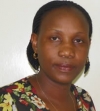Moses Joloba Lutaakome
ID: UNCST-2022-R011558
|
Diagnostic performance of STANDARDTM E TB-Feron ELISA and STANDARDTM F TB-Feron FIA (IFN-r) for tuberculosis diagnosis in a Ugandan population
REFNo: HS783ES
General Objective: To evaluate the diagnostic performance of STANDARDTM E TB-Feron ELISA and STANDARDTM F TB-Feron FIA (IFN-r) in a Ugandan setting.
Specific Obectives;
1. Evaluate the performance of TB-Feron blood collection tubes, STANDARDTM E TB-Feron ELISA, and STANDARDTM F TB-Feron FIA (IFN-r).
2. Compare the performance agreement and correlation of STANDARDTM E TB-Feron ELISA and STANDARDTM F TB-Feron FIA (IFN-r) with QuantiFERON-TB Gold Plus.
|
Uganda |
2020-07-27 |
2023-07-27 |
Medical and Health Sciences |
|
Non-degree Award |

|
Fred Wabwire-Mangen
ID: UNCST-2021-R013549
|
IMPROVING QUALITY AND UTILIZATION OF MATERNAL, NEONATAL AND CHILD HEALTH DATA THROUGH OPEN DATA KIT TECHNOLOGY
AND COMMUNITIES OF PRACTICE IN UGANDA
REFNo: HS605ES
Broad objective: To pilot the open data kit technology and communities of practice to improve quality and utilization of MNCH data.
Sub-study one objectives
1. To determine the current knowledge and practices of health workers at EmONC health facilities regarding the assessment and management of mothers and newborns.
2. To use the knowledge and practice findings to prioritize, plan and implement QoC improvements regarding assessment and management of mothers and newborns through communities of practice in the participating health facilities
Sub-study two objectives
1. To assess the quality (completeness, accuracy, scope, reliability, relevance and timeliness) of MNCH data at sub-national and national level.
2. To assess the capacity at sub-national level to process (collect, capture, clean, analyse, interpret) and submit MNCH data to the DHIS2 as well as utilize at facility level to show trends in MNCH outcomes.
3. To develop and pilot the practicability and feasibility of an Open Data Kit (ODK) application customized for MNCH data collection and transmission to a consolidated server.
4. To create a community of practice to support a multi-level system for health data capture staff and implementers to continuously document, learn and share experiences on collection, analysis and utilization of MNCH data and indicators.
|
Uganda |
2020-07-23 |
2023-07-23 |
Medical and Health Sciences |
|
Non-degree Award |
_passport size.jpg)
|
Peter Kawungezi Chris
ID:
|
First Mile Community Health Program monitoring and evaluation
REFNo: HS643ES
1. To evaluate the impact of Continuing Medical Education on participants and trainees
2. To evaluate the impact of Post graduate Community Rotations on Trainees, and Community health facilities
3. To evaluate the impact of Faculty Community Health Mentorship on Faculty and Community health facilities
4. To evaluate the impact of Community Health Research Grants on Post graduate trainees and Faculty
5. To evaluate the impact of Community placement extension grants on undergraduate students and the community.
|
Uganda |
2020-07-23 |
2023-07-23 |
Medical and Health Sciences |
|
Non-degree Award |

|
John Baguma Muhunga Kule
ID: UNCST-2023-R007146
|
Control Environment, Credit Management Systems and Financial Performance of Savings and Credit Cooperatives in Mid-Western Uganda.
REFNo: SS513ES
1. To establish the relationship between control environment and financial performance of SACCOs in Mid-Western Uganda.
2. To ascertain the association between credit management systems and financial performance of SACCOs in Mid-Western Uganda.
3. To determine whether accountability mediates the affiliation between control environment and financial performance of SACCOs in Mid-Western Uganda.
4. To establish whether accountability mediates the relationship between credit management systems and financial performance of SACCOs in Mid-Western Uganda.
5. To establish the bond between accountability and financial performance of SACCOs in Mid-Western Uganda.
|
Uganda |
2020-07-23 |
2023-07-23 |
Social Science and Humanities |
|
Degree Award |

|
Annet Nankwanga
ID:
|
Improving Makerere University Staff Health and Well-being through Streamlined Physical Activity Programs (Mak Active Project)
REFNo: HS592ES
The Project aims at improving the health and wellbeing of Makerere University staff through implementing well organized physical activity programs.
|
Uganda |
2020-07-22 |
2023-07-22 |
Medical and Health Sciences |
|
Non-degree Award |
.jpg)
|
Abel Wilson Walekhwa Wilson
ID: UNCST-2021-R011571
|
WATER QUALITY ANALYSIS OF IMPROVED WATER SOURCES AND ASSOCIATED FACTORS IN KIBUKU DISTRICT, EASTERN UGANDA
REFNo: HS641ES
•To assess the quality of water from improved water sources
•To determine the factors influencing quality of surface water sources
•To establish the community knowledge, attitude and practices about water quality of improved water sources
|
Uganda |
2020-07-22 |
2023-07-22 |
Medical and Health Sciences |
|
Non-degree Award |

|
Andrew Obuku Ekii
ID: UNCST-2024-R002288
|
A PILOT STUDY TO EVALUATE THE FEASIBILITY OF IDENTIFYING, ENROLLING AND FOLLOWING ACUTE AND EARLY HIV-1 INFECTED INDIVIDUALS
REFNo: HS674ES
1. Evaluate the ability to detect persons with acute and early HIV-1 infection at selected voluntary counselling and testing centres in Masaka, Bukomansimbi, Kalungu, Lwengo, Sembabule, Lyantonde, Kyotera and Rakai Districts.
2. Evaluate participant retention rates within the six months of study follow up
3. Evaluate the proportion of GeneXpert HIV-1 Viral Loads reactive and Rapid Alere Determine HIV-1/2 non reactive individuals
|
Uganda |
2020-07-22 |
2023-07-22 |
Medical and Health Sciences |
|
Non-degree Award |
.jpg)
|
Agnes Ssali Nanfuka
ID:
|
Investigating the social, health and economic vulnerabilities and resilience of children of women at high risk of HIV in Kampala, Uganda
REFNo: SS463ES
To determine the prevalence of HIV in children (aged 12-24 years) and their mothers who engage in sex for money or commodities at the GHWP clinic in Kampala, Uganda
2. To determine points of vulnerability and resilience in children of high-risk women through life course histories of a selected sample of children attending GHWP clinic
3. To understand the pathways through which contextual, structural and mental health challenges affect biomedical and behavioural HIV prevention and treatment outcomes of women who engage in sex for money or commodities in Kampala and their children
|
Uganda |
2020-07-22 |
2023-07-22 |
Social Science and Humanities |
|
Non-degree Award |

|
Richard Mugambe Kibirango
ID:
|
Development of a behavioural intervention to foster proper urban waste management in Kampala City- Uganda.
REFNo: HS718ES
1. To explore the existing policies and interventions related to waste segregation and recycling so as to understand the facilitators and barriers; campaign activities, tools and touch points to inform the intervention package/ development.
2. To explore the facilitators and barriers to waste segregation at source and recycling in Kampala city.
3. To develop and adapt a behavioural intervention to foster waste segregation at source and recycling in Kampala city using findings from ‘1’ and ‘2’.
4. To pilot the intervention and evaluate its feasibility and acceptability for sustainable implementation at scale in fostering waste segregation and recycling in Kampala City.
|
Uganda |
2020-07-22 |
2023-07-22 |
Medical and Health Sciences |
|
Non-degree Award |

|
Joseph Ssenyonga
ID:
|
Effects of violence and maltreatment on the development and well-being of children: Experimental approaches to studying the causal effects of maltreatment reduction (The EVIDENCE – Studies)
REFNo: SS444ES
The research project will be guided by the following objectives:
1. To assess the prevalence of common forms of violence in the school experienced by secondary school students in Southwestern Uganda.
2. To evaluate the disciplinary measures that are commonly used by teachers at secondary schools in Southwestern Uganda
3. To examine teachers’ and students’ perspectives on commonly used and perceived disciplinary measures.
4. To investigate the consequences of violence discipline measures used in schools in Southwestern Uganda.
5. To implement and evaluate the feasibility and effectiveness of the training program Interaction Competencies with Children for Teachers [ICC-T] that aims to prevent harsh discipline and violent disciplinary measures at secondary schools in Southwestern Uganda.
|
Uganda |
2020-07-17 |
2023-07-17 |
Social Science and Humanities |
|
Non-degree Award |

|
Edward Mukooza
ID:
|
Health Risk Associated with Near-Road Ambient Air Concentration of Particulate Matter in Mukono Municipal Council, Uganda
REFNo: HS651ES
i- To measure the mean concentrations of near-road particulate matter PM2.5 in the period May 2020 to April 2021 in Mukono municipality, Uganda.
ii- To describe Mukono municipality’snear-road populations’ exposure to PM2.5 .
iii- To assess the healthrisk associated with the near-road concentrations of PM2.5, in Mukono municipality, Uganda.
|
Uganda |
2020-07-17 |
2023-07-17 |
Medical and Health Sciences |
|
Degree Award |

|
Travis Curtice Benjamin
ID:
|
Public Health, Trust, and Livelihoods: The Case of COVID19 in Uganda
REFNo: SS465ES
The key objectives of this study are to explore 1) how support for, and trust in state institutions shape individuals’ responses to public health crisis caused by the Coronavirus; and 2) more generally, the effect of COVID19 on income and livelihoods in a low-income country setting.
Overall Objectives
The coronavirus continues to spread across the globe. While there have been several early assessments of individuals' concerns and behavior in response to the shifting landscape of the pandemic, most work thus far has concentrated in OECD countries. We therefore know far too little about the impact of the Coronavirus on everyday life in low-income countries, where the virus has made a late entry. Focusing on the case of (rural) Uganda, our proposed study aims to close this gap. Results from this study will provide important insights into the relationship between trust in the government and public health and the impact of the public health crisis on migration, money transfers, and economic and food insecurity.
We propose to conduct a short phone survey that builds on a recently completed randomized control trial (RCT). The follow-up survey will allow us to test whether trust in political institutions are important not only in shaping individuals’ attitudes (e.g., their assessment of governments mitigating actions), but also their preventative health behaviors in response to the novel Coronavirus in Uganda. We are also interested in documenting how the Coronavirus is affecting the livelihood and wellbeing of the rural poor in a low-income country setting, where Covid-19 research has been sparse.
|
USA |
2020-07-17 |
2023-07-17 |
Social Science and Humanities |
|
Non-degree Award |

|
Justine Bukenya Nnakate
ID: UNCST-2021-R012503
|
Acceptability of Retractable Needles and Syringes in Three Referral Hospitals in Kampala District, Uganda
REFNo: HS701ES
1. To establish the different service delivery areas within Hospital settings where retractable injection devices can be used.
2. To determine cadres of staff that use retractable injection technology and target them for training.
3. To establish injection administration purposes where retractable technology is acceptable.
4. To establish number of injection procedures health workers need to perform to gain confidence using the retractable technology.
5. To determine the types of Injection administration techniques where retractable technology is most used
6. To document other different types of injection device technologies that are being used in the study service delivery areas.
7. Document reduction in safety box use following introduction of retractable technology.
8. Collect information on stakeholder views (managers, logisticians, injection administrators, and injection recipients) regarding future use of the technology in Uganda, in particular, how easy it is to use the device
|
Uganda |
2020-07-17 |
2023-07-17 |
Medical and Health Sciences |
|
Non-degree Award |

|
Bernard Kikaire
ID:
|
Utility of using C - reactive protein (CRP) in identifying bacteremia in children below five years presenting with fever at the Entebbe Grade B hospital.
REFNo: HS705ES
Overall objective
To evaluate the utility of CRP in diagnosis of bacterial infections in children below 5 years presenting with fever at outpatient facilities in Entebbe.
Primary objectives:
1. To estimate the proportion of children diagnosed with bacterial infection using CRP at Entebbe grade B hospital
2. To estimate the proportion of children diagnosed with bacterial infection using a high neutrophil count at Entebbe grade B hospital
3. To compare the two diagnostic criteria in identifying children with bacteremia at Entebbe grade B hospital
Secondary objective
1. To describe the treatment outcomes at day 7 of children managed for fever at Entebbe grade B hospital
|
Uganda |
2020-07-17 |
2023-07-17 |
Medical and Health Sciences |
|
Non-degree Award |

|
Charity Rutaremwa Bekunda
ID:
|
A MULTI-PERSPECTIVE ACCOUNT ON FATHERS’ PREPARATION OF THEIR SONS FOR FAMILY RESPONSIBILITY IN SOUTH-WESTERN UGANDA: LESSONS INFORMING SOCIAL WORK INTERVENTION ON POSITIVE FATHERHOOD.
REFNo: SS491ES
This research will consist of three sets of research study goals as outlined below:
1. How do fathers in South-Western Uganda prepare their sons for family responsibilities?
2. What are sons’ experiences on how their fathers prepare them for family responsibilities?
3. What are social worker’s views about the role of fathers preparing their sons for family responsibility?
4. Based on the findings, what lessons can be drawn informing social work intervention on positive fatherhood?
This research will consist of three sets of research study objectives, outlined below, according to the target population of fathers, sons, and social workers;
1. Fathers
• To explore and describe South-Western Ugandan fathers’ views on the role of fathers preparing their sons for family responsibility
• To draw conclusions and make recommendations about, Ugandan fathers’ views on the role of fathers preparing their sons for family responsibility
2. Sons
• To explore and describe the views of South-Western Ugandan sons on the role of fathers in preparing their sons for family responsibility?
• To explore and describe how sons are prepared by their fathers for taking on family responsibilities
• To draw conclusions and make recommendations about the views of Ugandan sons on the role of fathers in preparing their sons for family responsibility
3. Social Workers
• From the perspectives of social workers, to explore and describe how fathers in South-Western Uganda prepare their sons for family responsibilities
• To draw conclusions and make recommendations about the views of social workers on how Ugandan fathers prepare their sons for family responsibility
4. To proffer lessons for social work interventions on positive fatherhood drawn from the information obtained on the role of Ugandan fathers preparing their sons for family responsibility.
|
Uganda |
2020-07-17 |
2023-07-17 |
Social Science and Humanities |
|
Degree Award |

|
Ismael Ochen Ochen Ochen
ID:
|
Investigating the application and influence of monitoring and evaluation on community based natural resources management outcomes.
REFNo: SS493ES
1) To examine how the governance and institutional design of Protected Areas Management and Conservation NGOs embed and promote Monitoring and Evaluation of Community Based Natural Resources Management in South Western Uganda.
2) To assess the Monitoring and Evaluation systems, processes and approaches applied by the different Protected Areas Management and Conservation NGOs on Community Based Natural Resources Management in South Western Uganda.
3) To analyse the effectiveness, efficiency and impact of the Monitoring and Evaluation systems and approaches applied by the Protected Areas Management and Conservation NGOs in South Western Uganda.
4) To develop a Monitoring and Evaluation model for measuring success in Community Based Natural Resources Management
|
Uganda |
2020-07-17 |
2023-07-17 |
Social Science and Humanities |
|
Degree Award |

|
Kristen Reid
ID:
|
COVID-19 in Uganda: Epidemiology and Treatment Outcomes of the First 75 Cases
REFNo: HS677ES
3. To describe both immediate and intermediate outcomes of the first 75 Covid-19 patients in Uganda up to 6 months post discharge.,2. To describe the course of illness and treatment of the first 75 cases of COVID-19.,1. To describe the characteristics and clinical manifestations of the first 75 consecutive cases of COVID-19 infection in Uganda.,
|
USA |
2020-07-15 |
2023-07-15 |
Medical and Health Sciences |
|
Non-degree Award |

|
Christine Nalwadda Kayemba
ID: UNCST-2020-R014220
|
ASSESSMENT OF HEALTH FACILITIES FOR REPRODUCTIVE HEALTH COMMODITIES AND SERVICES IN UGANDA, 2020
REFNo: HS714ES
The overall objective of this survey is to document progress in the attainment of reproductive health commodities security and delivery of quality services, in Uganda in line with FP 2015-2020 CIP and supplies program.
The specific objectives are:
1.To ascertain availability and stock out of Reproductive Health commodities including the availability of generic contraceptives in the Service Delivery Points
2.To evaluate the supply chain (including cold chain) process of Reproductive Health commodities
3.To establish the staff training and supervision in the Service Delivery Points
4.To assess availability and usability of guidelines and protocols
5.To generate information on Communication Technology in the Service Delivery Points.
6.To generate information on methods of waste disposal in the Service Delivery Points.
7.To establish the user fees charged for consultation, medication and services provided by a qualified health care provider in the Service Delivery Points.
8.To establish clients’ perception about availability of FP services and costs borne to access the services
|
Uganda |
2020-07-15 |
2023-07-15 |
Medical and Health Sciences |
|
Non-degree Award |
.jpeg)
|
Andrew Ssemata
ID: UNCST-2023-R008259
|
HIV Self-testing among young people: Assessing the knowledge, acceptability and social implications of a peer-to-peer HIVST distribution model among adolescents aged 15 to 24 in Zambia and Uganda (HISTAZU).
REFNo: SS446ES
Primary objective
The primary objective of this study is to assess the knowledge, acceptability and social implications of a peer-to-peer distribution model of HIV self-testing kits on uptake of HIV testing services and linkage to ART among adolescents aged 15 to 24 in Zambia and Uganda.
Secondary Objectives
The secondary objectives of the study are to:
• To elucidate the perceptions and contextual factors likely to influence the implementation and acceptability of a P2P/SN distribution models of HIVST amongst AYP in Lusaka and Entebbe.
• To document experiences of AYP with P2P/SN model in supporting linkage to confirmatory testing and clinic-based ART in one urban community in Lusaka.
• To explore perception and experiences of young couples with secondary distribution of HIVST and the implication of this on household social relations and social harms.
• To investigate the perceptions, facilitators and barriers of self-testing among AYP in Entebbe.
|
Uganda |
2020-07-14 |
2023-07-14 |
Social Science and Humanities |
|
Non-degree Award |

|
Simon Kasasa
ID:
|
Understanding the Quality of Birth and Death Registration and Vital Statistics System in Uganda
REFNo: HS629ES
1. To establish the current quality (coverage, completeness, timeliness and accuracy) of birth and death registration in Uganda.
2. To assess the status of the national vital statistics systems; indicators regularly generated and the extent of data use by government agencies and partners.
3. To document factors (enablers and barriers) that impact the quality of birth and death registration system in Uganda
4. To document lessons learnt in implementing birth and death registration system in Uganda based on 2015 NIRA act and others
5. To establish existing opportunities and capacities in terms of linkages and technologies that are currently utilized in birth and death registration in the country
|
Uganda |
2020-07-13 |
2023-07-13 |
Medical and Health Sciences |
|
Non-degree Award |

|
| View |
|
Sort By: |
|
|
|
| |
|